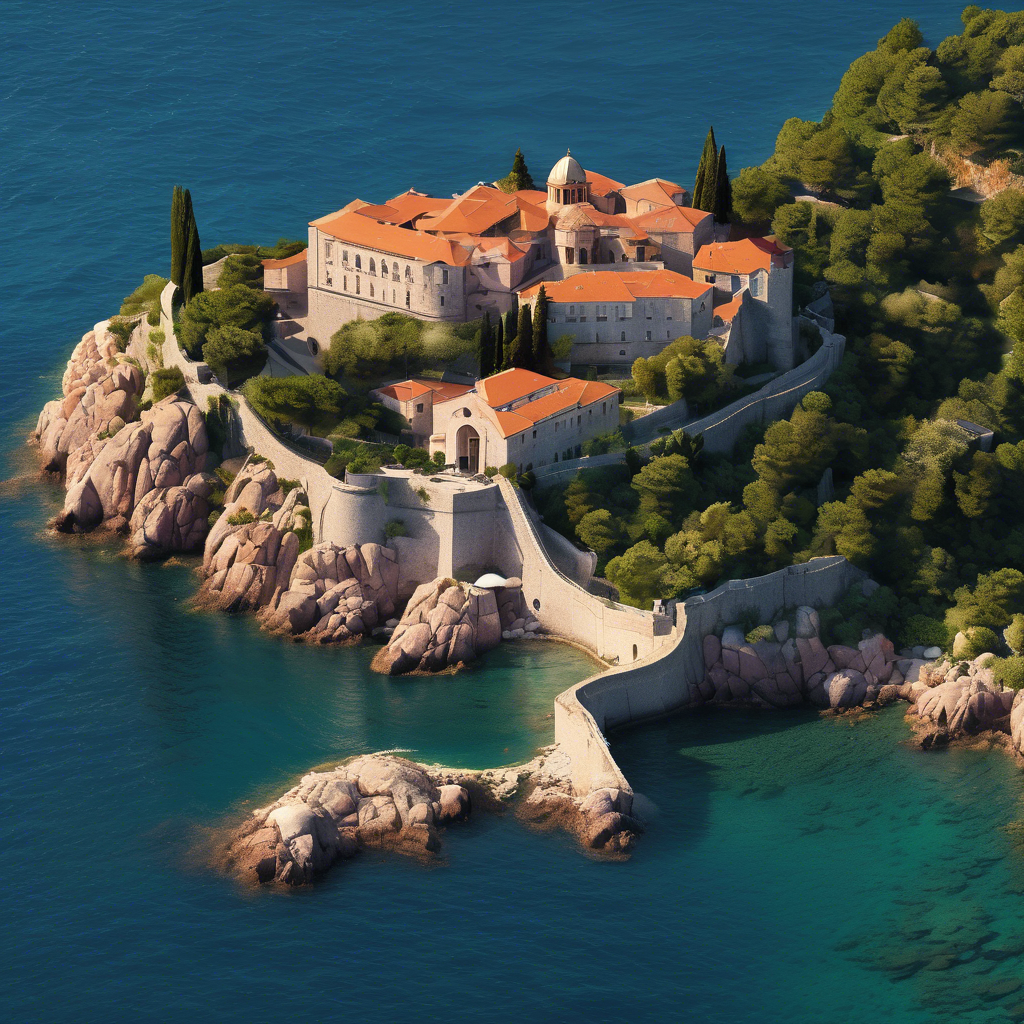
Nestled along the pristine Montenegrin coast, the picturesque islet of Sveti Stefan has long been celebrated as a jewel of Adriatic heritage, drawing visitors with its captivating blend of natural beauty and medieval charm. However, recent developments threaten to tarnish this historic sanctuary, with destructive construction and questionable privatization casting a shadow over the islet’s cultural and environmental integrity. As Art Historian and Heritage Management Specialist Visnja Kisic voiced to BIRN, the ongoing overdevelopment poses grave risks not only to Sveti Stefan’s history but also to the surrounding landscapes, including the enchanting Milocer Park. These concerns come amid a clarion call from Europa Nostra and the European Investment Bank Institute, who recently spotlighted the site in their alarming report, naming Sveti Stefan among Europe’s seven Most Endangered Heritage sites of 2023.
Sveti Stefan’s story begins back in the 15th century when it was meticulously fortified to serve as the cultural and administrative heart of the Pastrovici coastal region. The 1.2-hectare islet, teeming with stone houses, churches, narrow lanes, squares, and verdant gardens, radiates a timeless charm. Connected to the mainland by a low bridge near the lush Milocer Park, the area further boasts historical gems such as the 1930s summer residence of the former Yugoslav royal family, an elegant 19th-century French bridge, and a botanical garden carved out in French classical style. Despite its relatively small size, Sveti Stefan’s importance is underscored by its proximity to Budva, Montenegro’s tourism hub. Transformed from a centuries-old fortress into a stylish resort in 1960 by communist authorities, the islet has since become synonymous with sophisticated coastal luxury. Yet, the very developments that sought to celebrate its allure may now imperil its essence.
The complex ownership and management situation compounds the challenges facing Sveti Stefan. Since 2007, the state of Montenegro, which holds a majority share of 58.6%, entered into a pioneering public-private partnership with Singapore-based Aman Resorts through Adriatic Properties. This arrangement envisioned a harmonious blend of culture and commerce, utilizing the leasehold to operate a world-class resort. However, cracks soon appeared. By 2021, Adriatic Properties and Aman Resorts shuttered the resort amid privacy concerns on privately rented beaches, igniting local protests when the fences were torn down by ardent locals and Budva officials demanding public beach access. The fallout escalated into international arbitration, with the company seeking a staggering 100 million euros in damages. Now entering its fourth season of inactivity, the resort’s indefinite closure amplifies worries about the site’s stewardship and future. Locals lament the restrictions placed on public access, highlighting a persistent tension between private interests and the wider community’s right to cultural and natural heritage.
Visnja Kisic and other experts underscore that the privatization and unauthorized developments have inflicted tangible damage. The report reveals that Adriatic Properties illegally altered Sveti Stefan’s heritage structures without approval, undermining centuries-old architectural and environmental safeguards. Moreover, Milocer Park—the green lung adjacent to the islet—has faced significant threats. Government actions, defying established spatial plans, carved out dubious legal grounds for constructing large condo hotels and expanding villas, actions deemed inappropriate for a park of immense historical and cultural significance. Kisic warns that these disruptive intrusions jeopardize not only the aesthetic and cultural fabric but also the ecological balance of the area. Equally troubling is the exclusion of the local community and non-hotel guests from accessing Sveti Stefan and its beaches, which contravenes both Montenegrin laws and international agreements safeguarding citizens' rights to cultural enjoyments. The situation spotlights a complex web of legal, ethical, and cultural dilemmas that call for urgent resolution.
In response, the Europa Nostra report advocates for decisive interventions aimed at halting unauthorized development and restoring lost protections. Seven key recommendations stem from expert inspections, including a call for a comprehensive official assessment by specialists to document and evaluate the site’s condition. Central among these is the annulment of permits for ongoing construction projects in Milocer Park, which if left unchecked, will further degrade the cultural landscape. Despite the private leasehold arrangement, Montenegro retains the legal authority and responsibility to regulate development and safeguard heritage, a role complicated by past collusion between lessees and government entities prioritizing private gains over public good. Encouragingly, Kisic notes a shift in attitudes with current authorities expressing renewed commitment to cultural and environmental stewardship. Amidst these institutional challenges lurks another dimension of heritage discourse: the descendants of Yugoslav royalty, notably King Petar II Karadjordjevic’s family, have staked claims on properties including Sveti Stefan, adding layers of historical legacy and ownership dispute to an already intricate saga. This multifaceted struggle epitomizes the delicate balance required to protect a site that represents not just Montenegrin pride, but a shared European treasure at risk.
#SvetiStefan #MontenegroHeritage #EuropaNostra #CulturalPreservation #AdriaticCoast #HeritageAtRisk #SustainableTourism
Leave a Reply